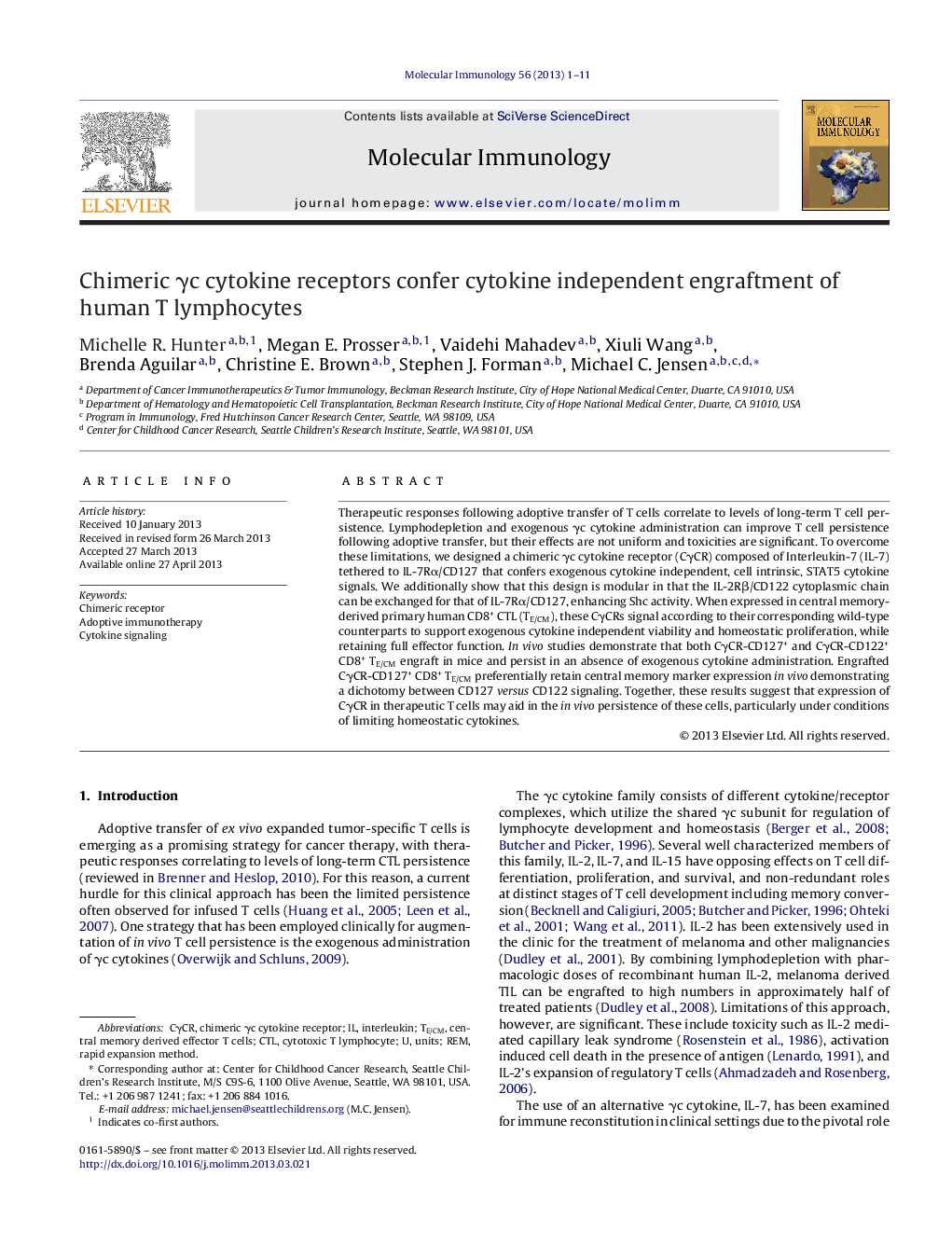| Article ID | Journal | Published Year | Pages | File Type |
|---|---|---|---|---|
| 2831091 | Molecular Immunology | 2013 | 11 Pages |
•A chimeric γc cytokine receptor (CγCR) is developed using IL-7 tethered to IL-7Rα.•The IL-2Rβ cytoplasmic chain of the CγCR can replace that of IL-7Rα.•CγCR-expressing T cells proliferate in the absence of exogenous cytokine in vitro.•CγCR-expressing T cells engraft and persist in mice without exogenous cytokine.•This system has potential utility for adoptively transferred therapeutic T cells.
Therapeutic responses following adoptive transfer of T cells correlate to levels of long-term T cell persistence. Lymphodepletion and exogenous γc cytokine administration can improve T cell persistence following adoptive transfer, but their effects are not uniform and toxicities are significant. To overcome these limitations, we designed a chimeric γc cytokine receptor (CγCR) composed of Interleukin-7 (IL-7) tethered to IL-7Rα/CD127 that confers exogenous cytokine independent, cell intrinsic, STAT5 cytokine signals. We additionally show that this design is modular in that the IL-2Rβ/CD122 cytoplasmic chain can be exchanged for that of IL-7Rα/CD127, enhancing Shc activity. When expressed in central memory-derived primary human CD8+ CTL (TE/CM), these CγCRs signal according to their corresponding wild-type counterparts to support exogenous cytokine independent viability and homeostatic proliferation, while retaining full effector function. In vivo studies demonstrate that both CγCR-CD127+ and CγCR-CD122+ CD8+ TE/CM engraft in mice and persist in an absence of exogenous cytokine administration. Engrafted CγCR-CD127+ CD8+ TE/CM preferentially retain central memory marker expression in vivo demonstrating a dichotomy between CD127 versus CD122 signaling. Together, these results suggest that expression of CγCR in therapeutic T cells may aid in the in vivo persistence of these cells, particularly under conditions of limiting homeostatic cytokines.
